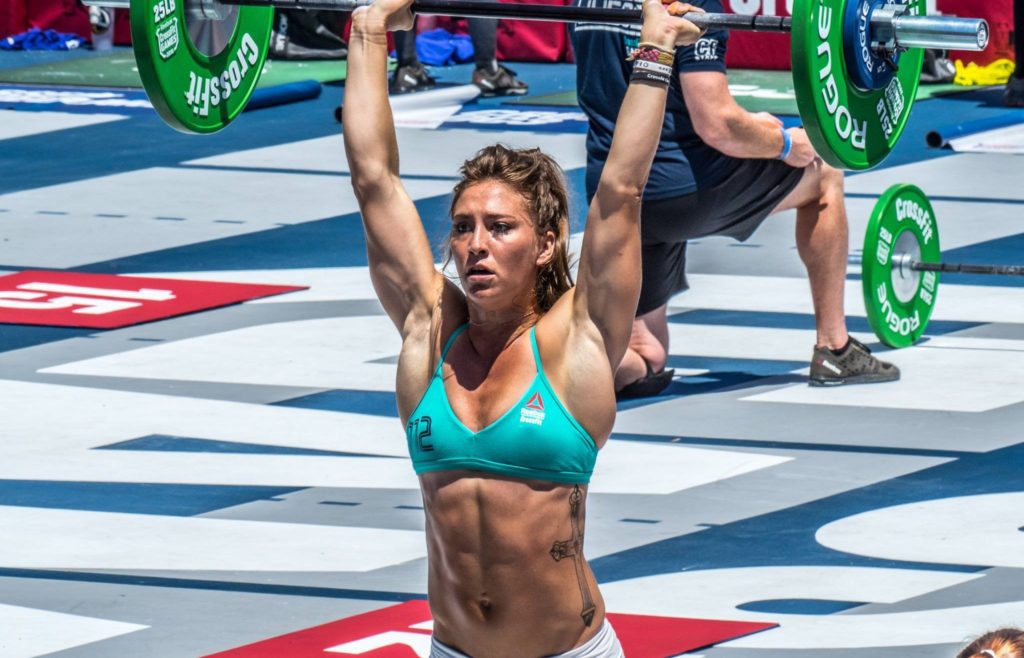When it comes to CrossFit training, your diet is as important, if not more important, for reaching your fitness goals.
The human body can do extraordinary things when you combine smart training and sound nutritional choices.
Conversely, even the hardest CrossFit sessions won’t help you lose weight, gain muscle, or get fitter if your diet isn’t on point.
Especially when it comes to appearance, diet plays a significant role in how you look and how you feel in the gym.
But diet is a complicated topic, and a lot of what’s available online is written with ulterior motives in mind like, “Sign up for my nutrition counseling!”
While there’s nothing wrong with that, it can make sorting through information difficult.
The goal of this guide is to help you cover your bases: to teach you about the principles of a good CrossFit diet, to give you an idea of where to start, to show you how to lose weight and gain muscle, and to equip you with
The truth is, your diet is an individual thing.
You’ll need to tinker and find what works for you. It takes time, but it’s the best investment in your health and training you can make.
This guide was built with that in mind.
What is A Good Crossfit Diet?

In the fitness world, diet is a tricky subject. We’ll cover several topics in this guide, but here the goal is to help cover your bases regarding nutrition.
Here are some guidelines for a good CrossFit diet:
Meets your caloric needs
If you’re regularly getting after it in the gym, you’ll need to eat more calories than a normal person. Not eating enough calories may lead to initial weight loss, but eventually, will lead to a plateau and decrease in energy.
Proper split of macronutrients
Tinker with your carbohydrate, protein, and fat intake until you find a balance that boosts performance.
Adequate intake of micronutrients
Essential vitamins and minerals that help your body function and stay healthy.
Aligned to your goals
Depending on your experience and goals, your diet should account for what you’d like to achieve (i.e. weight loss, better performance, qualify for a certain CrossFit competition, etc.)
Balanced in a way that promotes longevity
Without a dietary approach that accounts for lifestyle and opportunities to “reap the rewards” of your fitness, you will find eating to be a miserable experience. This makes long-term fitness and health difficult to achieve. A good diet allows for days off and occasional treats or cheat meals.
What Are Macronutrients?
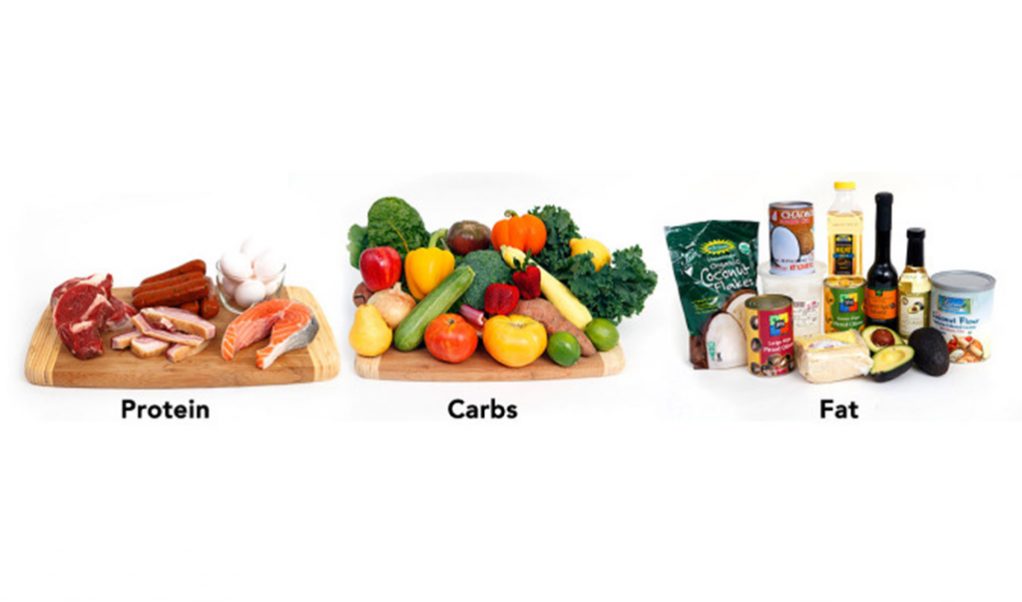
Macronutrients are the building blocks of which all human food is made from. It’s important for a CrossFitter to have an even split of macros to fuel their efforts and recover properly.
There are 3 macronutrients: protein, carbohydrates, and fats. 1 gram of protein or carbohydrate contains 4 calories, while 1 gram of fat has 9.
Protein are the actual building blocks of your diet. They help to grow muscle, hair, and regulate many processes in the body.
Carbs get a bad rap from the diet industry. If you’ve ever been on a low carb diet, you’re probably already conditioned to hate them. However, carbohydrates fuel our efforts. The body converts carbs into glucose so we have energy to complete tasks. Managing your carbohydrate intake with smart sources and monitored consumption can help you get what you need from this incredible tool for performance.
Fat regulates a number of hormonal processes in our body and keeps our nervous system healthy.
Not all macronutrients are created equally, though their caloric value never changes. For example, monounsaturated and polyunsaturated fats (considered to be the “healthy fat” because they contain omega-3 fatty acids. Trans fats aren’t naturally occurring and are linked to many health concerns. Saturated fat is often perceived negatively, but it really depends on the source. Eating saturated fat from an organic egg is not the same as eating saturated fat from a Twinkie. In either case, they’re all fat, meaning they contain 9 calories per gram.
What Are Micronutrients?

Micronutrients are things like vitamins and minerals that a healthy body needs to function properly. They are required for things like disease prevention, development, and well-being.
Examples include vitamin A, iron, iodine, and zinc. For example, a deficiency in iron can decrease cognitive and motor development.
You can get most micronutrients by eating a diet comprised of lean meats, vegetables, and fruits.
Crossfit Nutrition Guidelines

While there are plenty of guidelines to follow, you should base your diet on experience. This means trying different approaches until you find what works for you.
Basing how you eat off someone you want to look like is fool’s gold, because everyone’s body and genetic makeup is different.
However, there are a few proven approaches that most CrossFitters can adhere to and increase their fitness gains over time with.
One of those is to follow a 40c/30p/30f macronutrient split.
This means that an athlete’s caloric intake consists of 40% of carbohydrates, 30% protein, and 30% fat.
For example, if you used the standard American diet recommendations of 2,000 calories per day (though most CrossFitters likely need to eat more than that), you would consume 800 calories worth of carbohydrates, 600 calories of protein, and 600 of fat.
This works out to 200 grams of carbohydrates, 150g of protein, and about 66g of fat per day. You can then use a macro tracking app like My Macros to log your food.
There are plenty of macro calculators available online for free that take into account your age, training age, and weekly physical activity. The If It Fits Your Macros (IIFYM) is often considered another diet, but it’s really the foundation of most modern tracking styles today.
CrossFit Diet For Fitness vs Competitive Crossfit
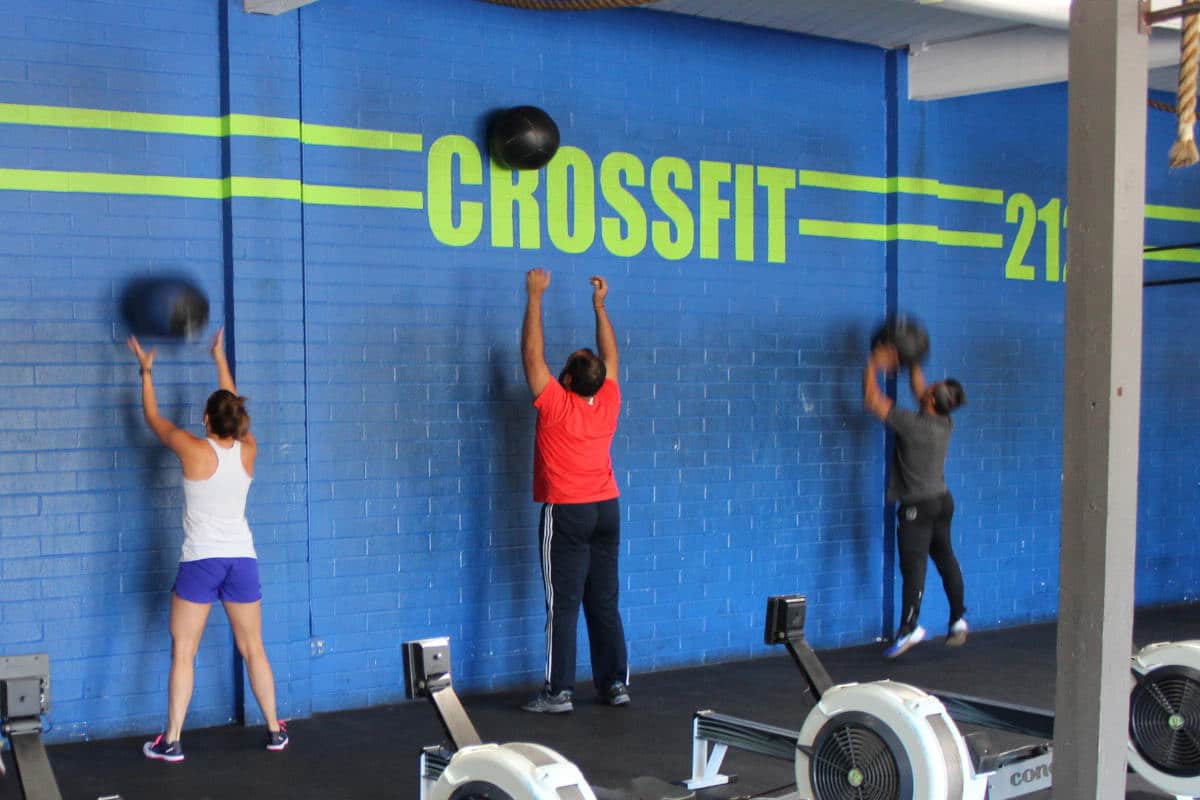
Your diet will vary depending on your CrossFit goals and level of involvement with the sport. One major difference is that a competitive CrossFit athlete simply needs to eat more calories.
An athlete that uses a competitive CrossFit programming (like CrossFit Invictus or MisFit athletics, for example) will train at least 7.5 hours per week.
Compare that to someone going to CrossFit 3-4x per week. Neither is wrong or right, but both situations require different approaches.
Just like a car needs more gas for a longer trip, understand that the more you train, the more you’ll need to eat. Since carbohydrates are fuel, competitive athletes will likely need a lot more carbohydrates than an average gym-goer.
What Types of Crossfit Diet Exist?
Historically, CrossFit has encouraged a few dietary approaches. Here is a brief introduction to some of most popular: the Zone diet, the Paleo diet, the ketogenic diet.
Ketogenic Diet

Colloquially known as keto, this diet promotes rapid weight loss.
Combining CrossFit with keto can be a very powerful way to lose weight.
One of the primary benefits is only really applicable to those CrossFitters coming in with preexisting health or metabolic issues. Keto can help reduce or reverse the effects of things like type 2 diabetes and generally give you more energy, which can of course be helpful for better performance in the sport.
There are several benefits to going keto, many of which can be applied directly to CrossFit performance and overall health.
Here are some of the most important ones:
- Keto has been proven to help people lose lots of weight.
- The keto diet is anti-inflammatory, meaning many of the foods one eats are packed with antioxidants and other bioactive compounds that reduce inflammation in your body’s tissues. This helps boost recovery and protect you from several diseases, like cancer and diabetes.
- Some studies have shown that a high-fat, low-carb diet can greatly reduce or reverse poor metabolic health, which can lower your risk from a whole host of other diseases.
- The keto diet promotes lots of protein and fiber, two nutrients that help rebuild muscle and promote satiety after meals (essential for weight loss).
- After an initial adjustment period, many keto dieters say they have more energy from living in ketosis than they did when eating carbs.
There are a few things to keep in mind when engaging in a ketogenic diet. First, “eating keto” doesn’t mean you’ll enter ketosis. It’s a bit more nuanced then that. At the end of the day, a calorie is still a calorie. If you’re going over your caloric intake, you won’t hit your goals.
Cutting too many carbohydrates can diminish your performance. While some people find their performance improves, others find that this diet isn’t right for them.
Also, let’s not mix up the ketogenic diet with being healthy. Someone who eats a lot of healthy fats, vegetables, and lean protein with a keto split will look and feel far different from someone who eats bacon and cheeseburgers without buns and calls it keto.
Finally, it’s important to understand how carbohydrates work in the body. For every gram of carbohydrates you consume, the body will hold onto 2-3 grams of water. When you suddenly reduce your carbohydrate intake, you’ll lose a ton of water weight (hence the term “water cuts” among weight classed athletes). You might see a big jump on the scale, but it’s not a change in your body composition— it means you’re retaining less water.
If you try the ketogenic diet, read some studies, understand your body processes, and be realistic.
Zone Diet
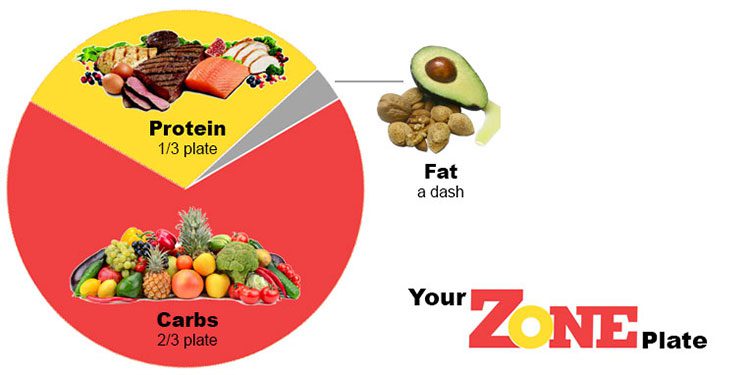
Designed to reduce inflammation and balance hormones, the Zone diet uses block counting and a balanced macro split (30/30/40) to ensure you eat foods that keep you in a good “zone” for performance.
With the Zone diet, you’re meant to eat on a schedule, starting within one hour after you wake up, then every three to four hours to keep your energy level up.
You can technically eat any foods on the Zone diet, but whole foods are easier to block out because they are easy to balance. Blocks are the Zone diet equivalent of portions, making this plan quite similar to macro tracking. Check out this full breakdown of the Zone diet for more info.
One caveat with the Zone plan is that the recommended daily “blocks” are 11 and 14 for women and men, respectively. When you do the math, this recommendation is incredibly restrictive. While you may experience fat loss on this diet, it won’t be sustainable for long. Furthermore, you might lack the energy to really hit a CrossFit workout.
Fortunately, the plan has a good structure. Adding more “blocks” can help you modify this plan to for better performance and health.
Paleo Diet
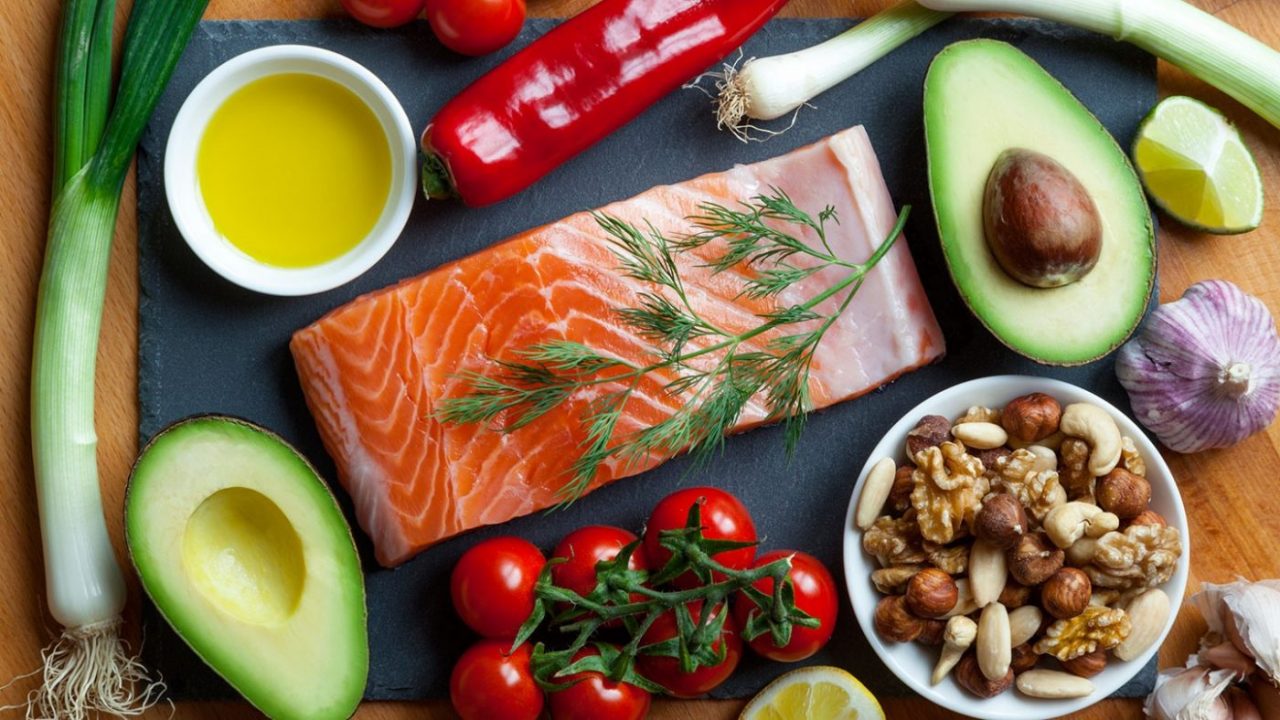
The Paleo Diet is the king of CrossFit nutrition.
CrossFit and the Paleo Diet have stuck together since the very beginning of the sport. One reason for its popularity is that it very closely sticks to Greg Glassman’s original dietary prescription from the 2002 CrossFit Journal article titled, “What Is Fitness?”, which said:
“Eat meat and vegetables, nuts and seeds, some fruit, little starch and no sugar. Keep intake to levels that will support exercise but not body fat. “ – Greg Glassman
Paleo encourages a diet full of “food a caveman would eat”. It’s been a catalyst for weight loss for many CrossFitters.
Be careful, though. If you train hard or live an active lifestyle, you may need to add additional starchy vegetables and increase your carbohydrate intake with nutrient-rich sources— especially if your goal is improving your lean body mass. This Paleo For Athletes book may help you find a balance between competition and healthy eating.
The Worst Foods For Crossfitters
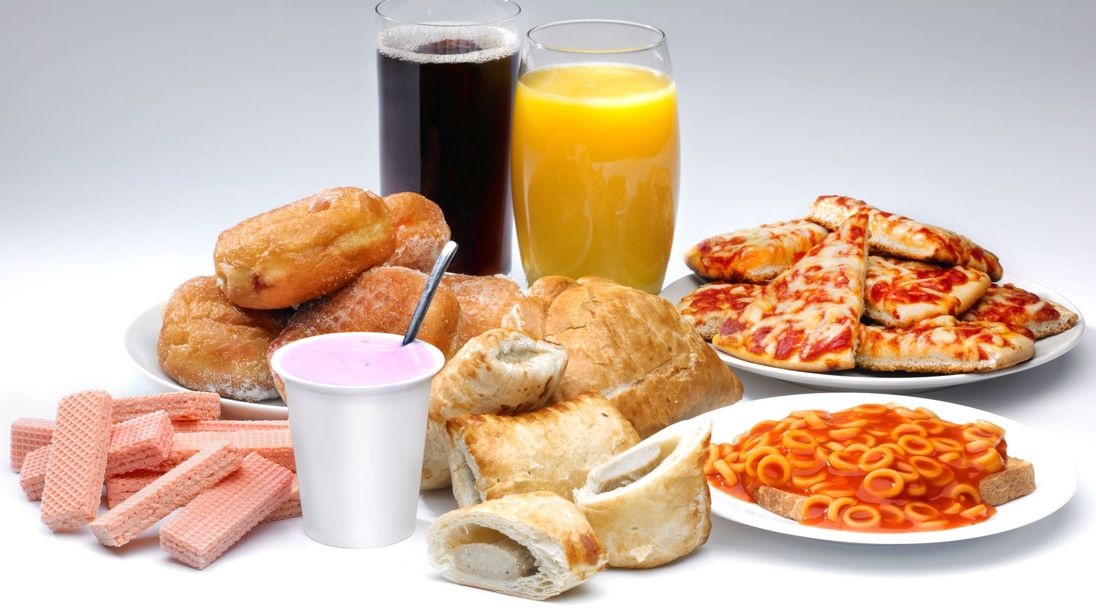
Balance is important, but eating highly processed foods regularly will make it difficult for you to achieve your fitness goals.
When you are setting PRs in the gym and training hard, your body needs “clean” fuel.
This means your diet consists of easily digestible, highly nutritional food choices that can be converted quickly and that don’t stress out your gut and lead to inflammation.
As a general guideline, keep processed foods to a minimum, focus on eating lean protein, healthy fats, and swap out the low carb mentality for a smart carb mentality
If it comes out of a bag or has ingredients you can’t pronounce in it, eat it sparingly. You can also save less-than-optimal choices for your “cheat meal.”
Before we move on, let’s take a brief moment to discuss vilifying foods. It’s important to prioritize nourishment as a CrossFit athlete, but it’s also important not to be overly restrictive. Strive to create a healthy mindset around food. Will eating your Grandma’s brown bread or drinking a couple beers with your best friends help your CrossFit workout? Maybe not. Will missing out on social events and obsessing over food choices hurt your mental health? Absolutely.
If you struggle to find your balance, consider working with a nutrition coach to help you reach your goals without sacrificing your quality of life.

Crossfit Diet Meal Plan

To this point, we’ve talked very generally about your diet and CrossFit goals. Here’s a bit more of a “step-by-step” approach for you, so you can walk away from this guide with some actionable advice to start with:
Figure out your macronutrient split
Either use a calculator or do research online to figure out your basal metabolic rate (BMR) and activity level. Don’t forget to account for activity level, because your BMR only factors in how many calories you burn at rest.
“Map” quality food choices onto your macro split
Once you find your protein requirements for example, figure out roughly how much real food (think Paleo or Zone approved) that would take to achieve. What would 150g of protein per day look like in lean ground turkey and chicken breast?
Start slow and grow
It takes time to build sustainable habits. One of the reasons that fad diets fail is that they encourage an all-or-nothing approach. Maybe this week you only have one or two days that suit your new meal plan. It could take time for you to get into the habit of shopping and meal prepping. But hey! That’s two days better than last week!
Shop for nourishing food
Even if you don’t want to follow a diet plan, starting with lean meat options, fruits, and vegetables as building blocks is a good idea. You can then supplement with other decent choices like rice, potatoes, and legumes. Here’s a Paleo shopping list to get you started.
Meal prep
There are a million meal prep guides and recipes available online. To get started, get out all your Tupperware and get your Crockpot ready to make cooking easy. Shoot for 1-2 meal preps for week, and as a general rule, always cook a little extra so you have leftovers in the fridge.
Don’t hesitate to take shortcuts as needed. There’s no shame in buying a roasted chicken and pre-cut vegetables from the store for those busy days. There’s also no shame in trying a meal prep service, like BistroMD or Trifecta. These shortcuts will serve you better than a shortcut through the local drive-through when life doesn’t go according to plan.
Crossfit Diet Plan To Lose Weight
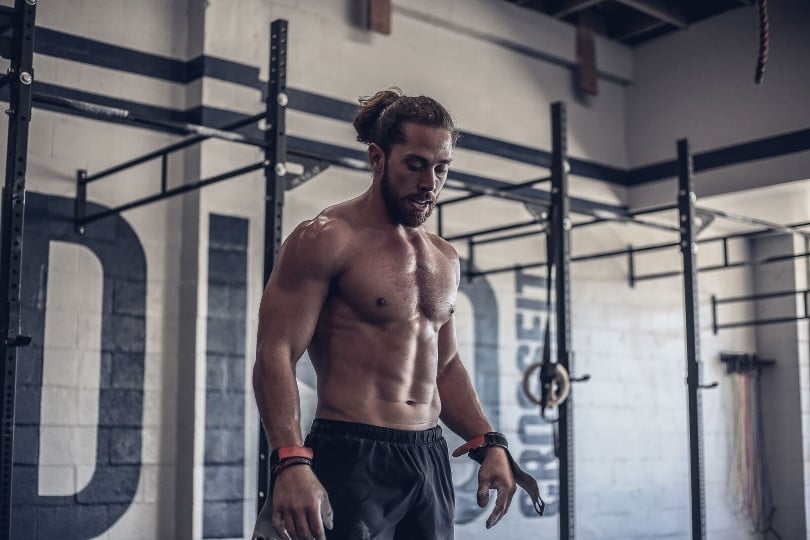
The truth is, weight loss happens due to a decrease in overall intake of calories. Thermogenics determine how we lose weight. Even then, sleep quality, hormone levels, stress management, and genetics also play a role.
Basically, you can’t lose weight without eating less or training more. Unfortunately, being in a calorie deficit also means that you won’t be building muscle mass, as a surplus is required to support growth.
Read Also: Best Thermogenic Pre Workout for 2021
One thing to keep in mind is that weight loss is a slow process, especially at first. If you start counting macros but adjust every week due to impatience, it will be difficult to track what’s working and what isn’t.
Try to stick to the same macro count for at least 3-4 weeks before changing.
Eating at a deficit of 200-500 calories per day is a good place to start if weight loss is your goal. Remember, this number isn’t just your basal metabolic rate, but factors in your activity level and training, too.
As a CrossFit athlete, you also need to be mindful of your performance. Eating at a major deficit (500 or more calories) will only lead to fatigue and make it difficult to obtain all the needed micronutrients.
There are many ways to focus on calorie deficit. One way is to do intermittent fasting. Intermittent fasting is less of a diet, and more of an eating style. Read this article to get in depth understanding of how to execute intermittent fasting properly.
Crossfit Diet Plan For Muscle Gain

To gain muscle mass doing CrossFit, you’ll need to eat an adequate amount of lean protein. Protein is what your body uses to repair and grow muscle tissue, among other things.
One general guideline that seems to work for people is to eat between .75-1g per pound of bodyweight per training day. So if you weighed 200 lbs, you’d eat between 150-200g of protein per day.
Don’t skimp on carbohydrates and fat, either. The truth is, you need to eat at a slight surplus (200-500 additional calories) above your daily caloric needs to gain muscle over time. Be careful, however. Too many extra calories will just lead to gaining fat.

CrossFit Nutrition FAQs
Developing a CrossFit diet plan is complex, with no clear black and white answers. Everyone has different bodies and different goals. Here are some of the commonly asked questions to get you started.
How Long Before Crossfit Workouts Should You Eat?
Eating before a workout is an individual thing. The answer depends on how you feel with food in your stomach before a workout.
Some people need it to feel good, others feel queasy if their stomach isn’t empty, so intermittent fasting in the morning works for them. Other people struggle to perform when their blood sugar is low and need a meal before heading to their local CrossFit gym. Tinker until you find what works for your individual needs.
How long before your workout you eat depends on two things: when you workout and what types of food help you perform.
For example, some people take the 5am CrossFit workout.
This would mean eating breakfast at 4:15-4:30 in the morning, which isn’t ideal. But, if you feel sick without eating before training, you’ll need to get up and do it.
A protein shake in this case may help so you aren’t cooking in the middle of the night.
The kinds of foods you eat before a workout will vary. Quick digesting carbs like bananas or oats are good for providing a boost of energy right before a training session.
Generally speaking, eating a small to medium sized meal 60-90 minutes before you workout is a good place to start.
Eat a balanced meal of lean protein and carbohydrates, and limit the fat intake. Fats take longer to digest and may make you feel sluggish come workout time.
Start tracking your mood and energy level alongside your meals. Look for patterns that could be impacting your performance and adjust accordingly.
What should you eat after a CrossFit workout?
Plenty of contradictory research exists on the topic of “post workout” nutrition.
Some science says you have a 45 minute window to eat that will maximize the gains you make from the workout (this is where the “Window of Gainz” from Barbell Shrugged came from).
Some of the science says it doesn’t matter as long as you eat a balanced diet throughout the day.
Personally, I’d recommend you try to do both. Focus on eating quality foods throughout the day, but try to eat something within an hour of training.
Some protein to boost recovery and carbohydrates to replace what you just burned off are good choices. There are plenty of option for post workout supplements too.
Shoot for 25-50g of protein and 50-75g of carbohydrates after you train.
If you can’t stomach lean meat after a session, a protein shake works just fine.
Some easy to digest carb options include bananas, oats, Larabars, apples, and yogurt.
Which supplements should I take?
A very popular question that many CrossFitters ask:
“Which supplements should I take to help me reach my goals?”
The answer? You guessed it– it depends on your goals. However, many CrossFit athletes take whey protein after a workout to promote recovery and fish oil at meals to help with inflammation.
Additionally, many athletes take a multivitamin to ensure they are getting their micronutrients.
A general rule about supplements is to treat them like dessert.
Make sure your nutrition is on point before you go adding expensive supplements to your routine, because they will be a waste of time if your diet isn’t already on point.
This guide reviews some of the top supplements for CrossFit, and explains some other supplements you might find helpful.
Which CrossFit Diet is Best?
Whichever diet helps you reach your goals while staying physically and mentally healthy. You may find success with one of the diets listed above, or embrace an intuitive eating style over time. The trick is to find your balance and not take things to extremes. Work with a nutrition coach if you need accountability and guidance.
Wrap-Up
If you scoured through this whole guide, you can see how complex of a topic CrossFit nutrition truly is.
While there are no hard and fast rules, there are some general guidelines you can follow to achieve your goals.
Eat real food. Eat the right amount of fuel. Balance your macronutrients. Make sure you eat adequate micronutrients.
And of course, tinker until you find what works for you. Just like CrossFit, your nutrition is a journey that starts with you simply showing up and trying.
Learn as you go and be consistent, and you will achieve your fitness goals.

